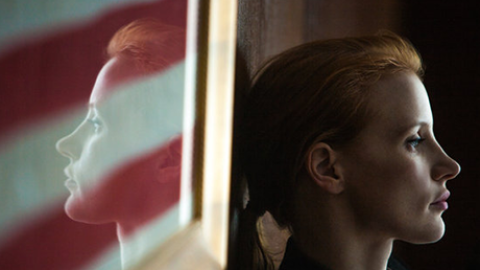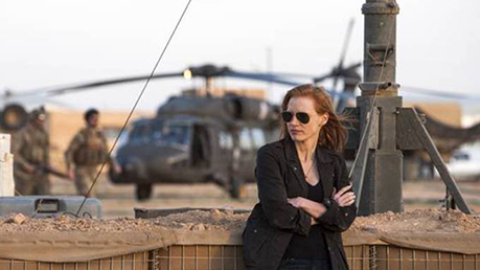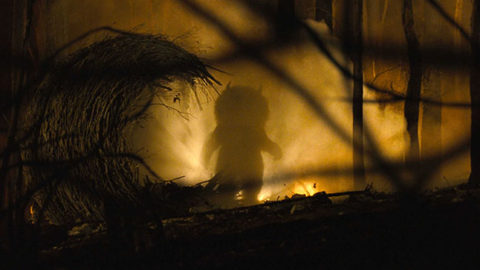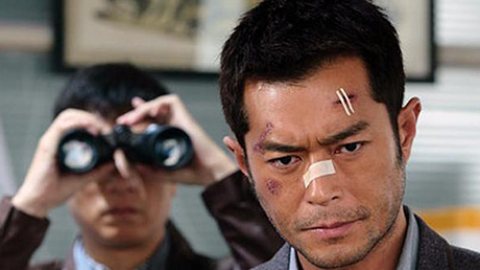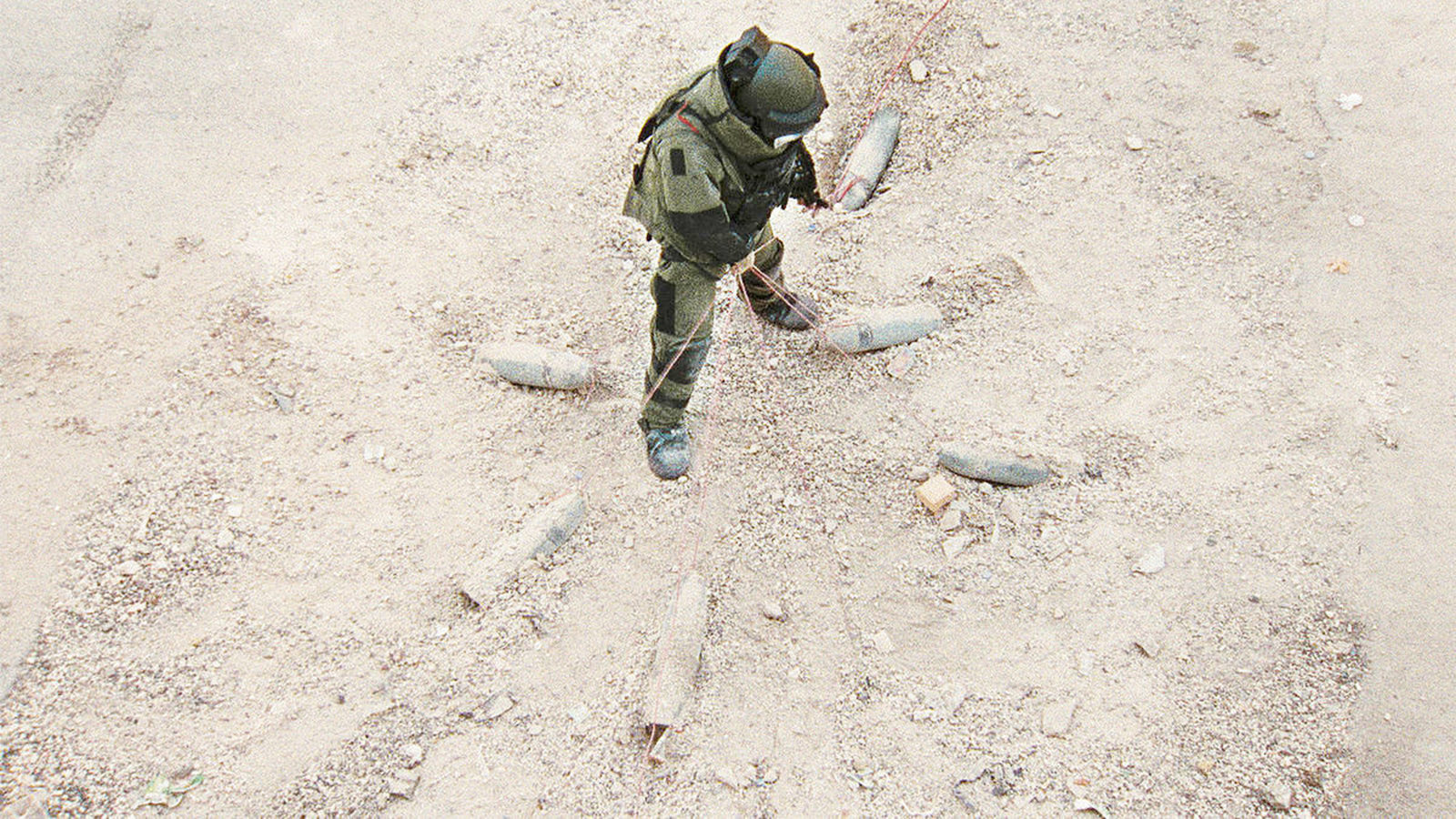
Hard Wired
In 1978, Kathryn Bigelow, aged 27, made her first film. Titled The Set-Up, it depicted two men beating each other to a bloody pulp for 20 minutes accompanied by voiceover readings of texts by cultural theorists Marshall Blonsky and Sylvère Lotringer. Staged at night in the elegantly lit confines of a Tribeca alley, the space defined and complicated by a diagonally parked taxi, it was shot on 16mm and its high-gloss production values set it apart from the Super-8 films and videos that were being produced at that time by gallery artists and fledgling filmmakers of the New York No Wave. In a 1995 Film Comment interview, pegged to the release of Strange Days, Bigelow remarked to Gavin Smith that when she made The Set-Up, she knew what she wanted to see on the screen but had only a vague idea of how to get it. She didn’t understand how to fake shots and pull punches, with the result that her actors were laid up afterwards for two weeks. Nevertheless, The Set-Up contains in embryo everything that would preoccupy Bigelow through the seven feature films that followed: the seduction of violence for viewers and participants, the codes of masculinity, the familiar forms of action genres, and the structuralist aesthetic that dominated the art world in the Seventies.
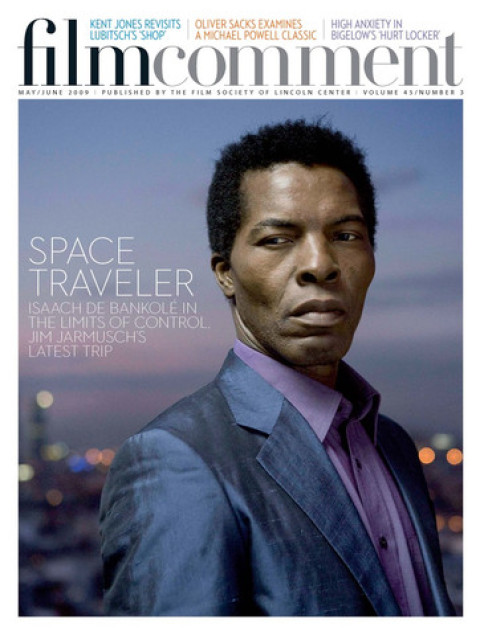
Her new film, The Hurt Locker, is both a structuralist war movie—it could be titled “Seven Instances of Dismantling an Improvised Explosive Device”—and a totally immersive, off-the-charts high-anxiety experience from beginning to end. Scripted by Mark Boal, who in 2004 was embedded in Baghdad with a U.S. Army bomb squad, the film focuses on a three-man team of Explosive Ordnance Disposal technicians whose job is to find and dispose of IEDs. In the opening sequence, the squad’s leader (Guy Pearce) is killed. His replacement, Staff Sergeant William James (Jeremy Renner), operates in a manner that immediately seems more reckless than his predecessor, and which his teammates, Sergeant J.T. Sanborn (Anthony Mackie) and Specialist Owen Eldridge (Brian Geraghty), who are in the final 38 days of their rotation, fear will get them all killed. James refuses to use remote-controlled ’bots to uncover and disarm IEDs, preferring to get up close and personal. He tears off his protective suit, which isn’t all that protective anyway, since it impedes his speed and mobility. He disconnects his communication gear when he doesn’t want to heed warnings from Sanborn and Eldridge that they’ve attracted too many potential hostiles and need to get out now.
Is he a cowboy, so addicted to his adrenaline rush that he’s heedless of danger to himself and the men in his unit? Or is he, by virtue of his experience and talents—he says he has disarmed 878 IEDs—simply better than Sanborn or Eldridge at estimating acceptable risk and getting the job done? And what, after all, is acceptable risk for an IED tech, when statistics show that they have a casualty rate five times higher than other combat troops and, on the other side of the ledger, that IEDs have caused 50 percent of the U.S. casualties in Iraq, not to mention the thousands of Iraqis killed and injured by them? The Hurt Locker doesn’t engage the politics of the war in Iraq per se, but it blows a hole in the facile explanation offered by the military—and by individual soldiers just about every time they get on TV—that their concern is doing their job to the best of their ability and trying to make sure the soldiers fighting with them get home in one piece. In practice, nothing is that simple or clear-cut.
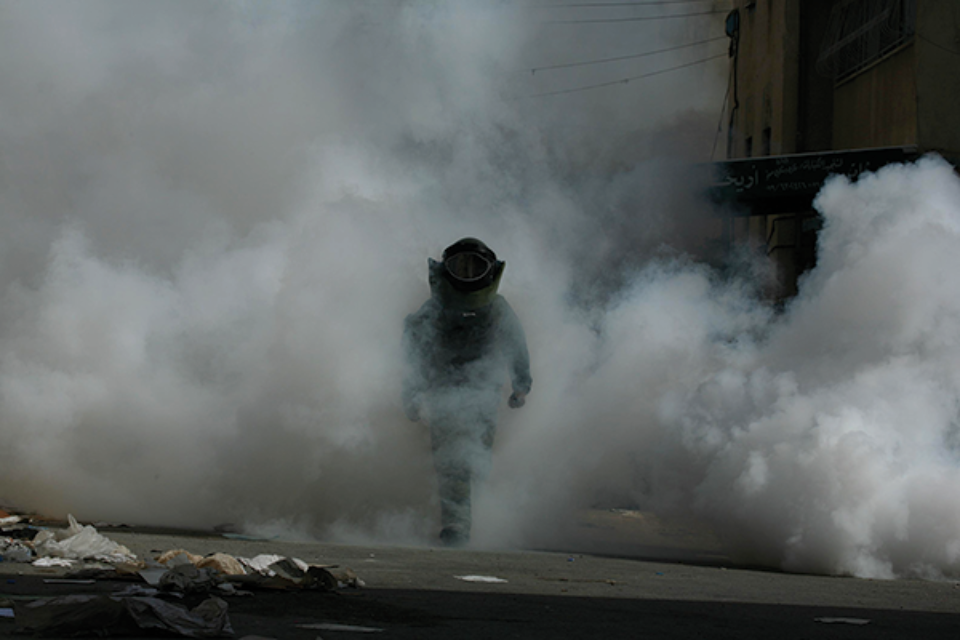
Breathtakingly kinetic and spatially coherent (a rare combination), The Hurt Locker puts us in the middle of a fully three-dimensional theater of war with mines underfoot and snipers everywhere. Working with DP Barry Ackroyd, Bigelow devised a brilliant choreography for camera and actors. The film was shot handheld: four operators armed with Super-16 cameras simultaneously covered the action vérité-style—glued to the actors’ bodies and eyes, responding with zip pans and zooms and off-balance tilts to sudden movements that spell danger to the left, the right, in front and behind. Bob Murawski and Chris Innis’s editing is similarly quick and nervous; the rapid changes in POV as they cut from one camera’s coverage to another’s make you feel as if you, like the characters, are under threat from all sides.
The film opens with a quotation from Chris Hedges’s War Is a Force That Gives Us Meaning: “The rush of battle is a potent and lethal addiction, for war is a drug.” Bigelow harnesses her action-movie chops in the service of allowing us not only to understand the addiction but to feel the adrenaline surge in ourselves. The opening sequence produces an immediate contact high that lasts through to the final frame. Bigelow’s dedication to cinema as an experiential medium finally has a worthy subject. Which is not to say that the movie functions either as a recruiting tool, or as a panacea for the viewer, who, safe in her or his seat, might prefer to keep knowledge of Iraq or Afghanistan compartmentalized, neatly packaged as a two-hour movie. Like the great modern war films—Apocalypse Now, Full Metal Jacket, The Thin Red Line—The Hurt Locker depicts the war zone as a dystopia, where notwithstanding the horror, those who fight draw pleasure from how the possibility of imminent death concentrates the mind and sends the serotonin levels soaring.
Two of three central characters in The Hurt Locker have had it with such pleasures. Sanborn and Eldridge are sick of the danger, the heat, the sand that sticks to faces and gets inside parched mouths, and the insects that crawl onto a gunner’s eyelid just as he’s about to pull the trigger on a sniper who will take him out if he isn’t taken out first. If that last image sounds like a cliché, it is and it isn’t. Closing tight on James’s sand-encrusted face and the bug that maybe mistakes his eyeball for a wading pool, the camera discloses the visceral reality that the cliché papered over. It’s as if we’ve never seen the image properly before. Bigelow risks quite a few of these clichés and she finds the nugget of truth in most of them. The one misstep is the Morricone-like score that is out of whack with the rest of the audio, which is as dense and alive as the image.
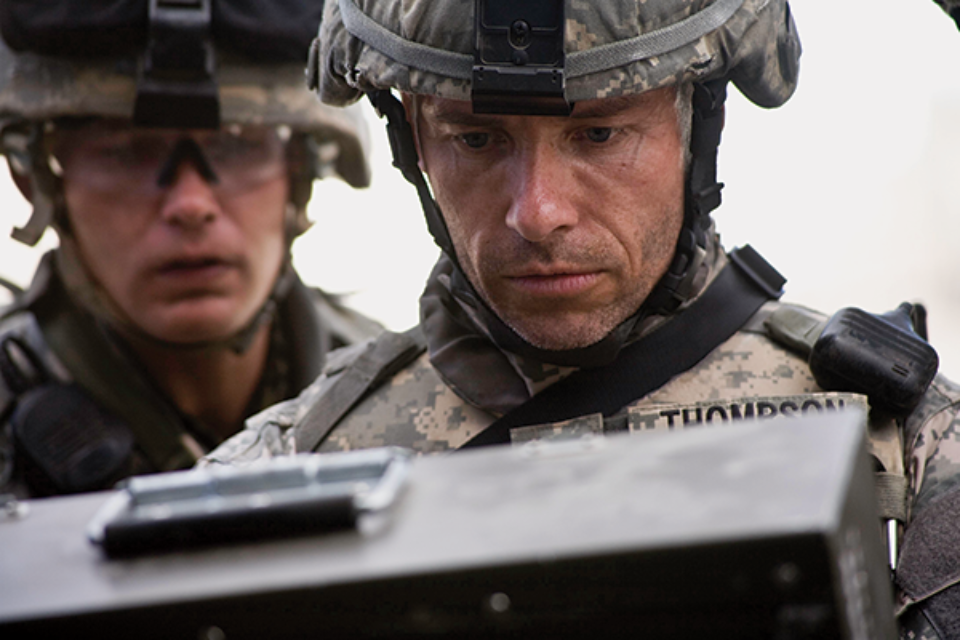
Suppressing backstory and plot in the interest of the existential present, The Hurt Locker is structured entirely as a procedural. Each of the team’s seven missions has its own dramatic arc and the last of them is no more intense than the first. Tension is stockpiled; it’s not anchored to plotlines. There are no character arcs; these three guys are the same at the end of film as they are at the beginning. The arc of the movie is in us: as we accumulate knowledge—intellectual and experiential—about the characters and their situation, our attitudes and feelings change. In the end it’s all about James. He acts; Sanborn and Eldridge react to his actions, yo-yoing between hatred and something approaching adoration. When James first arrives, he presents himself as a redneck racist, defying Sanborn, who’s African-American, to think the worst of him. And in fact, he is a redneck racist, but that’s not all or even most of who he is. Surrounded by insurgents in the desert, James and Sanborn bond. Later they celebrate their mutual survival by getting drunk and going mano a mano. As if to deny the comradeship they felt, they throw punches that are meant to hurt. When Sanborn winds up flat on his back, James gets on top of him, riding him like an animal, and Sanborn, reacting as he would in a barroom brawl with a good ol’ boy, pulls a knife on him.
It’s Mackie’s best scene, but nevertheless, it’s impossible to take your eyes off Renner, a magnificent actor who has the role, maybe, of a lifetime. Like Russell Crowe, Renner has a short fuse that belies his casual physical assurance. Where Crowe’s grace, however, is feline, Renner moves like a mastiff, and his fleshy, cheerful face is so ordinary it defies description. He has a mysterious talent that only great actors possess. He allows us to understand crucial aspects of his character—aspects of which the character himself is unaware. James is the guy for whom war is a drug. He’s never more alive than when he’s standing in the middle of a spider web of half-buried IEDs (one of the film’s most indelible images) clipping their wires one by one. What distinguishes him from garden-variety adrenaline addicts—the surfers of Bigelow’s Point Break, for example—is that he has a rescue fantasy as intense as his need to repeatedly test his own courage in the face of death.
By dismantling close to 900 IEDs, James has saved who knows how many times that number of lives. And, as the film is careful to show, he’s an equal opportunity savior. He’s the latest and one of the most moving descendants of Ethan, The Searchers’s fissured icon of masculinity. Which in part is why the last shot of The Hurt Locker, an echo of Ethan turning his back on hearth and home and riding alone into the desert, breaks the heart.



